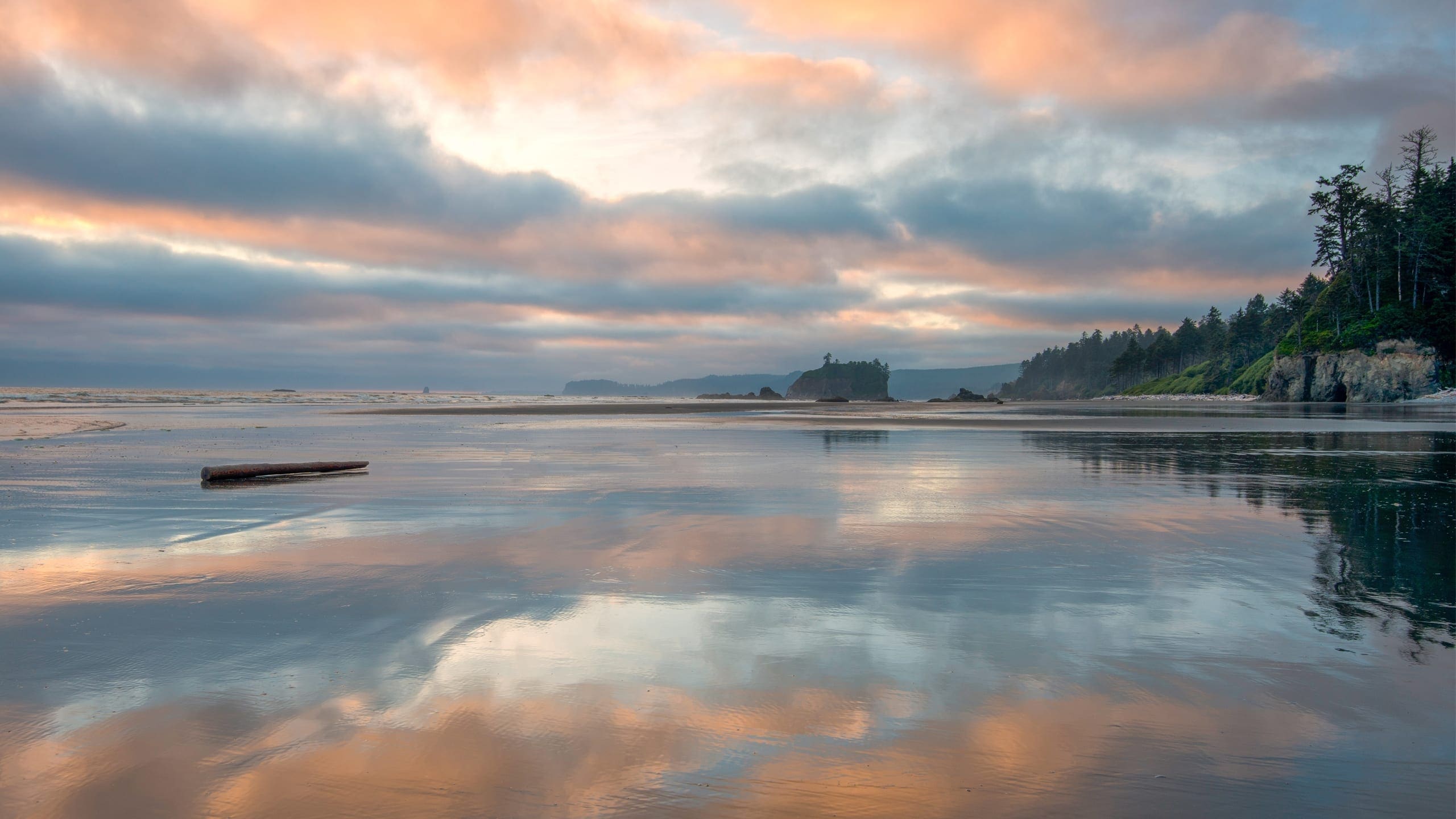About Olympic National Park
Olympic National Park protects 922,651 acres of three distinctly different ecosystems—rugged glacier-capped mountains, more than 60 miles of wild Pacific coast, and magnificent stands of old-growth and temperate rain forest.
The park also provides habitat for more than 1,000 species of native plants, hundreds of species of birds, and 70 species of mammals. Included in these numbers are several federally threatened species—such as the northern spotted owl (Strix occidentalis caurina) and the marbled murrelet (Brachyramphus marmoratus). Plants and animals unique to the Olympic Peninsula are also protected by the park. The peninsula’s isolation has led to the existence of more than a dozen endemic plant and animal species found at Olympic National Park and nowhere else on earth.
The park’s 3,500 miles of rivers and streams are home to many species of native freshwater fish and support numerous unique stocks of Pacific salmon and steelhead, including the federally threatened bull trout (Salvelinus confluentus), which use both fresh and saltwater during their life cycles.
The 43,000 acres of the park’s Pacific coastal strip and offshore islands protect beaches, intertidal areas, and rocky tide pools. The national park boundary extends seaward to the lowest low tide line.
Interwoven throughout this outstanding and diverse landscape is an array of cultural and historic sites that tell the human history of the parklands. Hundreds of archeological sites document more than 12,000 years of human occupation of Olympic National Park lands, and historic sites reveal clues about the 200-year history of exploration, homesteading, and community development in the Pacific Northwest, as well as the continuing evolution of the federal preservation ethic. Local communities are closely and directly linked to the park and its landscape in culture, heritage, and tradition. Museum collections, including ethnographic objects and archival collections, further document the history and cultures that are directly related to the diversity of the Olympic National Park landscapes.
The outstanding attributes of Olympic National Park have led to international recognition. In 1976 the park was designated an International Biosphere Reserve in the Man and the Biosphere Program by the United Nations Educational, Scientific and Cultural Organization (UNESCO). This International Biosphere Reserve designation identifies the park as an internationally significant area of ecosystem diversity within one of the world’s major biogeographical provinces. The park is valued for study of biological evolution and natural processes that are largely free of human disturbance. Olympic National Park serves as a global benchmark of ecological health against which effects of human activities in similar environments can be compared. The park was recognized for its scientific values because it contains superb examples of temperate rain forests and is a large protected ecosystem that remains essentially untrammeled.
In 1981 the park was designated a World Heritage Site by the World Heritage Convention, joining it to a system of natural and cultural properties that are considered irreplaceable treasures of outstanding universal value. Very few areas in the United States are designated as both a Biosphere Reserve and World Heritage Site. No jurisdiction is implied by either of the UNESCO designations, and the United States of America and the National Park Service have the full authority and jurisdiction over park lands. The exceptional quality of the park is well summarized in the following concluding words of the UNESCO evaluation of the park as a World Heritage Site:
“Olympic National Park is the best natural area in the entire Pacific Northwest, with a spectacular coastline, scenic lakes, majestic mountains and glaciers, and magnificent temperate rain forest; these are outstanding examples of ongoing evolution and superlative natural phenomena. It is unmatched in the world.”
Olympic National Park encompasses one of the largest wilderness areas in the contiguous United States—95% of the park (876,447 acres) is designated wilderness, and 378 acres are designated “potential wilderness additions.” The Daniel J. Evans Wilderness, established to preserve its wilderness character, secures for the American people the inheritance of an untrammeled, undeveloped area for each succeeding generation to protect and enjoy. More than 10 million people live within a five-hour drive of the park, garnering the benefits of the primeval quality of its diverse ecosystems. The wilderness provides resource and economic benefits including clean water and air, native plants and wildlife habitat, natural soundscapes, dark night skies as well as recreational opportunities. The wilderness offers more than 600 miles of trails, from easy strolls to challenging paths and hundreds of thousands of remote trailless acres where one can experience solitude and unconfined recreation. Olympic’s extraordinary wilderness affords an inspirational legacy of wild America.
Source: Foundation Document – Olympic National Park
Fast Facts:
| Date the Park was Established: | June 29, 1938 |
| Park Area (as of 2019): | 922,649.41 acres (3,733.8 km2) |
| Recreational Visitors (2018 Total): | 3,104,455 visitors |




